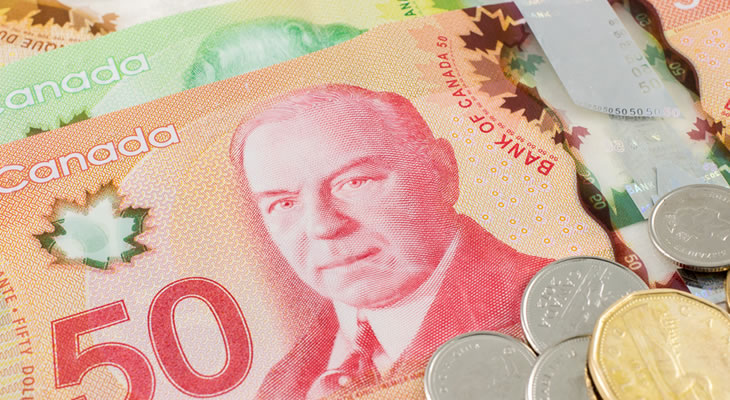- Robust UK service sector growth shored up Pound – Confidence in outlook of domestic economy improved
- Oil price fluctuations focus of Canadian Dollar movement – Lack of OPEC production deal weighed on commodity demand
- Weaker US payrolls report forecast to boost GBP/USD exchange rate – Lower jobs growth could dent odds of imminent Fed action
- Referendum worries to remain downside influence on Sterling – GBP exchange rates to remain sensitive to polls
Pound Sterling (GBP) Boosted by Improved UK Services PMI
‘Brexit’ uncertainty remained the primary influence over the Pound (GBP) this week, with investors reacting to the latest raft of referendum polls. While an ICM telephone poll indicated that the ‘Leave’ camp had pulled significantly ahead, this was soon contrasted by a YouGov survey which suggested that there was no gap between the sides. Consequently, with the result still far from a gone conclusion, investors were prompted to buy back into the weakened Pound on Thursday.
The outlook of the UK economy as shown by the May PMIs seemed rather mixed, with a modest improvement in manufacturing contrasted by an unexpected dip in the construction sector. However, markets were more influenced by Friday’s stronger-than-expected Services PMI, which rose bullishly on the month from 52.3 to 53.5. As the service sector accounts for more than three quarters of the domestic economy this positive result offered fresh incentive for investors to favour Sterling against rivals.
It is likely to be another slow start to the week for the Pound on Monday, leaving the currency largely at the mercy of any new shifts in ‘Brexit’-based sentiment. Should polls continue to indicate a narrower gap between the two sides than the ICM telephone survey showed then confidence could continue to support Sterling, although signs of greater ‘Leave’ campaign support may erode the currency’s recent gains.
OPEC Meeting and Oil Price Volatility Weighed on Canadian Dollar (CAD) Demand
Wednesday’s modestly weaker Canadian Manufacturing PMI helped to weigh down the ‘Loonie’ (CAD) in the latter half of the week. Markets were inclined to take a less optimistic view on the outlook of the Bank of Canada (BOC) in response to this sign of softening within the domestic economy. As Eric Theoret, FX Strategist at Scotiabank, noted:
‘Relative central bank policy remains the most important near-term driver for CAD, as we consider the contrast between a neutral BoC and a hawkish, normalizing Fed.’
Confidence in the Canadian economy remains generally weakened by worries over the ultimate impact of the Alberta wildfires and deteriorating commodity trade conditions, particularly after Brent crude dipped back below US$50 per barrel.
Oil came under renewed pressure thanks to the latest bi-annual meeting of the Organisation of the Petroleum Exporting Countries (OPEC), where members failed to agree any alteration in policy. Although expectations had not been for any particular change in stance, particularly as prices have pushed higher in recent weeks, markets were still disappointed by this result. Consequently, Brent crude slipped back below US$49 per barrel, dragging down the Canadian Dollar.
With risk appetite muted ahead of Friday’s high-impact US data the ‘Loonie’ remained generally out of favour with investors, despite a modest recovery in oil prices.

Non-Farm Payrolls Forecast to Weaken US Dollar (USD) on Lower Odds of Fed Rate Hike
Speculation over the likelihood of the Federal Reserve opting to raise interest rates in the near future has weighed somewhat on the US Dollar (USD) recently. Domestic data has proven inconclusive either way, with stronger ecostats and hawkish policymaker commentary contrasted by more discouraging manufacturing figures. However, a larger-than-expected decline in redundancies displayed by the Challenger Job Cuts measure and an as forecast ADP Employment Change figure raised market hopes for Friday’s Non-Farm Payrolls report.
Further volatility is likely given that this particular measure of employment conditions is considered one of the most influential pieces of data with regards to the policy decisions of the Federal Open Market Committee (FOMC). A robust signal could strengthen the case for a June interest rate hike further, although a disappointing report is expected to dent the odds of such an imminent move. Forecasts do not point to an overly encouraging result, however, as researchers with Nomura noted:
‘Labour market indicators from business surveys have been generally steady for May. But it appears that hiring activity has ratcheted down in recent months. Our analysis suggests job growth should slow in coming quarters, as we expect labour productivity to recover modestly and growth to trend closer to potential.’
Current GBP, CAD, USD Exchange Rates
At the time of writing, the Pound Sterling to Canadian Dollar (GBP/CAD) exchange rate was on an uptrend around 1.8881, while the Pound Sterling to US Dollar (GBP/USD) pairing was making gains around 1.4418. Meanwhile, the Canadian Dollar to US Dollar (CAD/USD) exchange rate was trending narrowly at 0.7634.


Comments are closed.